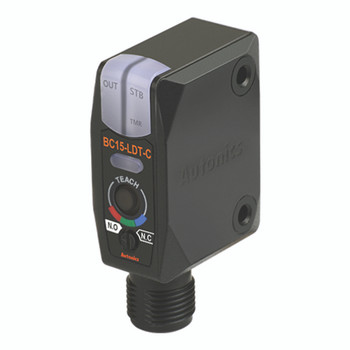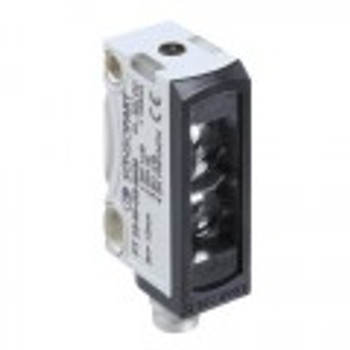Color Sensor
color sensor- to separate the light contemplated from the pattern into different parts
A color sensor casts RGB light (red, green, and blue LEDs) on the objects and separates the light reflected from the sample into different parts of the visible spectrum and returns the intensity value for each sub-spectrum. The distribution of these values shows the spectral characteristics and, thus, the target's color. A typical industrial color sensor allows you to teach one or more colors to the sensor's memory. In many cases, you can manipulate the threshold or change the tolerance for each color.
As soon as calculating the ratio of the intensity of the received red, green, and blue light, a switching output will be activated if the device distinguishes differences in the color or appearance of the object.
Color detection sensors are divided into three categories based on function: one-waycolor sensor, two-way color sensor (receiver and transmitter), and reflective color sensor with a mirror.
It can be used for sorting packaging, checking different labels, or detecting colors and color ranges on packaging and film.
There are some considerable Points that are useful to know about light reflection in these sensors:
- Only, the red light will be reflected if the light is emitted on ared surface.
- All three RGB colors will be reflected if the light is emitted to a white surface.
- The ratio of the red, green, and blue reflections varies based on the color of the object.
You can browse different brands of high-quality color sensor products on this website. In case you'd like to know a color sensor price or need technical consultation on it, feel free to contact us at +9714337738
Curious to know more about a Color Sensor ? The below blog post is just what you need:
Color Sensor [Working Principle, Feature, Industries and Applications]
-

Color Mark Sensors BC Series
Autonics
Product Overview The BC Series Color Mark Sensors deliver exceptional color matching accuracy for reliable and stable color detection in industrial applications. These sensors utilize RGB light-emitting diodes (LEDs) combined with 12-bit resolution... -

Color Sensor 150 mm Sensing Distance, 7 colors, PNP/NPN Output - FT 55-CM-4-PNSDL-L5M
Sensopart
Color Sensor 150 mm Sensing Distance, 7 colors, PNP/NPN Output - FT 55-CM-4-PNSDL-L5M Intelligent color sensor for stable processes, regardless of distance. The SensoPart FT 55-CM-4 Color Sensor is an intelligent color sensor that provides stable... -

Color Sensor 15mm Sensing Distance, NPN Open Collector - BC15-LDT-C
Autonics
This color mark sensor of the BC series from Autonics is a marvel of enhanced technology and a perfect fusion of optimization and durability. When it comes to adaptability and adjustments, this product really does a wonderful job. It is a... -

Color Sensor 22mm Sensing Distance, 5 Colors, NPN Output - FT 50 C-3-NS1-L8
Sensopart
FT 50 C-3-NS1-L8 Description Switching output, control input and bus-compatible RS485 interface Interface enables transmission of colour channel or colour value as well as reading, modification and... -

Color Sensor 32mm Sensing Distance, 3 Colors, PNP Output - FT 50 C-1-PSL8
Sensopart
A colorsensor has the ability to determine different colors. They will utilize a means of emitting light and then look at the reflected light to determine an object's color. This will give the machine the... -

Color Sensor 12mm Sensing Distance, Push-Pull Switching Output - FT 25-C1-GS-M4M
Sensopart
FT 25-C1-GS-M4M Description - High switching frequency of ≤ 2.5 kHz for rapid automation processes - Reliable detection of „non-colours“ black, white, grey - Simple alignment and precise...
